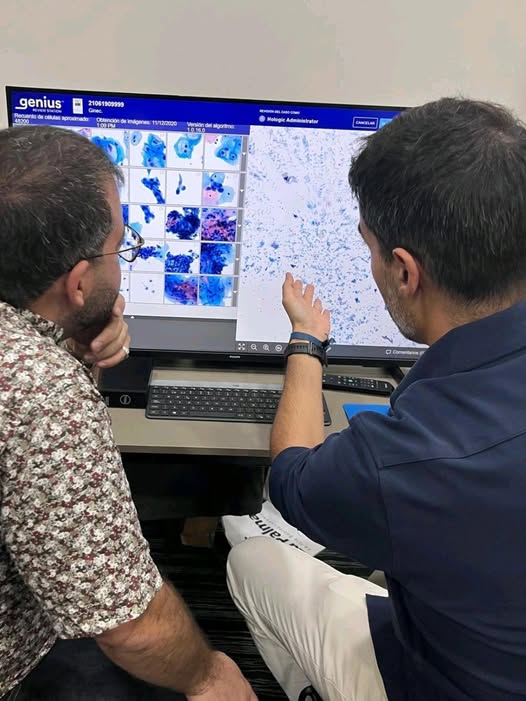Human papillomavirus is the most common sexually transmitted virus and the leading cause of genital warts. Males demonstrate specific symptoms once they have the virus.
Human papillomavirus (HPV) affects the skin and moist membranes that line the body. It is a group of more than 100 viruses, and different types of HPV occur in different areas of the body.
HPV types 6 and 11 cause more than 90% of genital warts in both sexes. HPV types 16 and 18 cause most HPV-related cancers.
HPV symptoms in males
HPV might transmit during sexual intercourse.
Although most males who have HPV do not show any symptoms, some develop growths or warts.
These may occur on the:
- penis
- testicles
- anus
- groin and thighs
- tongue and top of the mouth
Genital warts can be small or large, flat or raised, or cauliflower-shaped.
They might appear as a bump or group of bumps in the area surrounding the penis, anus, or genitals.
These warts do not often hurt but can be unsightly.
HPV is not cancer, but the HPV virus can cause changes in the body that may lead to cancer.
A doctor may not diagnose cancer for years after a person has HPV because the changes in the cells that have HPV build up very slowly.
The symptoms of HPV-related anal cancer include:
- bleeding, discharge, pain, or itching of the anus
- swelling of the lymph nodes in the anal or groin area
- changes in bowel habits or the shape of stools
Penile cancer can lead to:
- tissue changes on the penis, such as color, skin thickening, or tissue buildup
- painful or painless sores or growths on the penis that might bleed
Cancer of the back of the throat can trigger:
- constant sore throat or ear pain
- persistent coughing
- trouble breathing or swallowing
- weight loss
- voice changes or hoarseness
- lumps or growths in the neck
Medicine has not yet found a way of distinguishing temporary HPV from HPV that could progress into cancer.
Causes
HPV transmits through direct and intimate contact, including sexual contact, for both sexes. The virus can spread from one person to another through oral, anal, or vaginal sex, or if the skin touches that of another person.
If someone has HPV, they can spread the virus, even when they have never had visible symptoms.
The chance of a person contracting HPV increases due to certain factors, including:
- a sexual history that includes multiple partners
- age as HPV occurs more often in adolescence or young adulthood
- being uncircumcised
- damaged skin
People should consult a doctor if warts of any kind appear on the genitals or if warts occur that cause discomfort or pain.
Complications
While some types of HPV can only cause genital warts, others can cause cancers as well.
Doctors diagnose more than 42,000 HPV-related cancers every year in the United States. Roughly 18,300 of these cancers occur in males.
In males, doctors have linked HPV to the development of the following cancers:
- HPV might be responsible for more than 90% of cases of anal cancer, which affects 2,200 males each year.
- More than 60% of penile cancers start with HPV.
- Around 70% of people with oropharyngeal cancer, which occurs in the back of the throat, the base of the tongue, and tonsils, might have it due to HPV.
Compared with males who have sex with only females, males who have sex with other males are more likely to develop HPV-related anal cancer.
Males who have a weakened immune system due to HIV or other reasons have a higher chance of developing HPV-related anal cancer than others. Males with HIV also tend to develop more severe genital warts that are harder to treat.
Treatment
A doctor can use cryotherapy to freeze off genital warts.
No treatments are currently available for HPV, but disease management can help HPV-related conditions and some of the symptoms.
No routine screening is currently available to diagnose HPV in males. However, a doctor can often diagnose whether a person has HPV by examining any warts that have appeared. If an individual has several risk factors, a doctor may also swab the anal region for HPV.
A doctor can treat the resulting genital warts with prescription medication or surgically remove them.
The surgical removal of warts involves freezing or burning them off, depending on their size, location, and shape. This method is known as cryotherapy.
Getting rid of warts might not prevent the transmission of the virus to a sexual partner, however.
If a person does not receive treatment for genital warts, they are unlikely to turn into cancer. More likely, they will go away, grow, multiply, or stay the same.
If HPV develops into one of its common forms of cancer, a doctor or cancer specialist will treat the individual with a combination of surgery, chemotherapy, and radiation therapy.
Prevention
Receiving vaccines and using condoms correctly during sex can lower the risk of contracting HPV. However, condoms cannot provide full protection against HPV because it may be present in areas that a condom does not cover.
Though no treatment is available, three effective vaccines can help prevent HPV. All three vaccines prevent infection by HPV types 16 and 18. These two have the strongest connection to cancer.
One of the vaccines also keeps types 6 and 11 at bay, which are the ones most often linked to genital warts.
Vaccines
A vaccine can help keep HPV at bay.
Doctors recommend that boys receive the two-dose HPV vaccine series at 11–12 years of age.
A doctor may give three doses in the following situations:
- The two doses were less than 5 months apart.
- The child is over 14 years old and so should receive three doses over 6 months.
- The individual has a less effective immune system.
The United States Food and Drug Administration (FDA) have approved Gardasil 9, a vaccine suitable for individuals aged 9–45. In 2014, Gardasil 9 only received approval as safe up to 26 years of age.
The FDA have now updated this to include adults up to 45 years old if they did not receive a vaccine when younger.
Since HPV vaccination began in the U.S., the number of females 14–19 years with one of the four main types of HPV has dropped from 11.5% to 4.3%. In females 20–24 years, the figure has fallen from 18.5% to 12.1%.
The HPV vaccine is safe and effective. Studies have reported no serious side effects, although the FDA advise that it might cause pain at the injection site, swelling, slight discoloration, and headaches.
The vaccine does not prevent other STIs or treat people who already have HPV or HPV-related diseases.
Living with HPV
According to the Centers for Disease Control and Prevention (CDC), an HPV infection typically resolves without treatment within 2 years. Estimates are that 90% of HPV infections will clear, with the help of the immune system, without causing any harm.
Nevertheless, viruses are difficult for a doctor to treat actively, and developing immunity might take months or even years. A person could potentially have HPV for many years before receiving a diagnosis or experiencing complications.
If a person has genital warts, they should avoid sexual contact until they treat the condition.
The period during which genital warts can spread after removal is unknown. Wearing a barrier contraceptive, such as a condom, can help prevent further spread.
Although HPV is common, and most sexually active adults will have HPV at some point in their lifetime, HPV-related cancers and health problems are less common overall.


